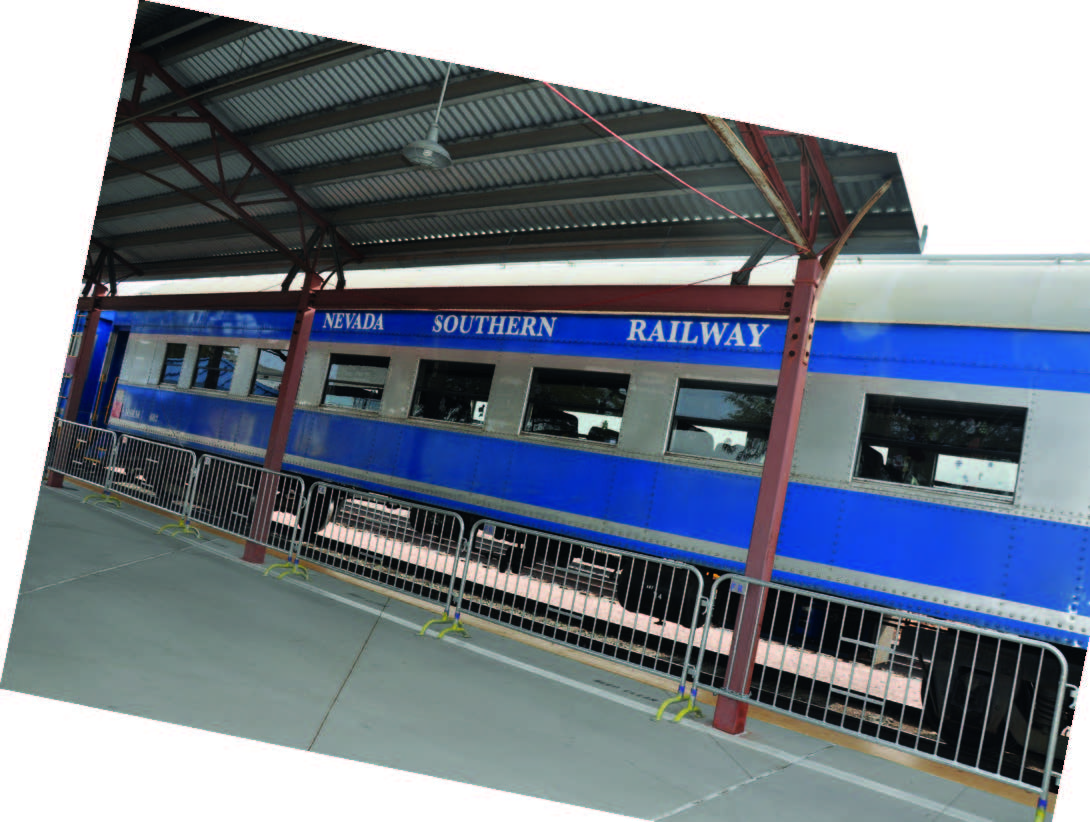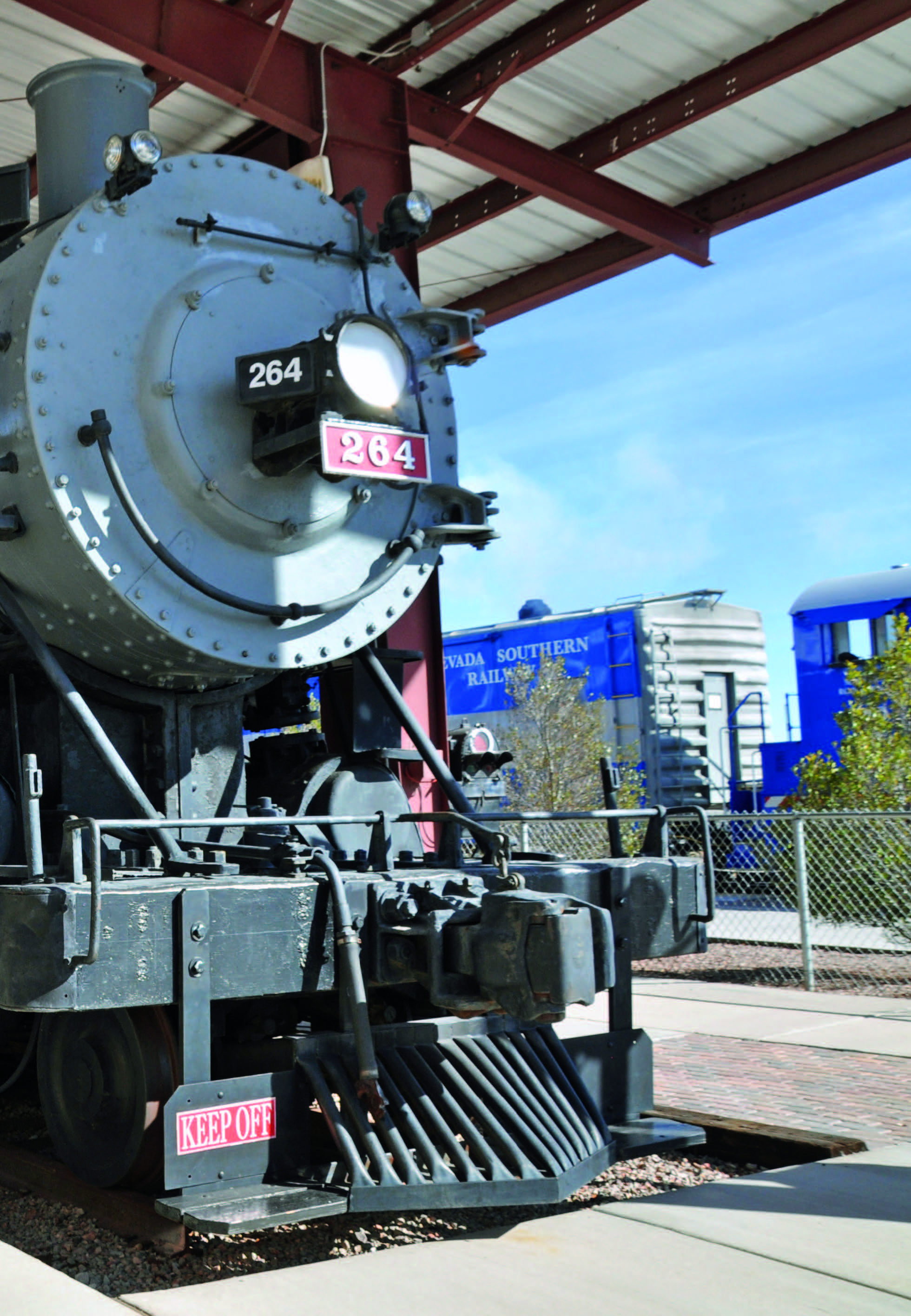Nevada State Railroad Museum, Boulder City
July – August 2016
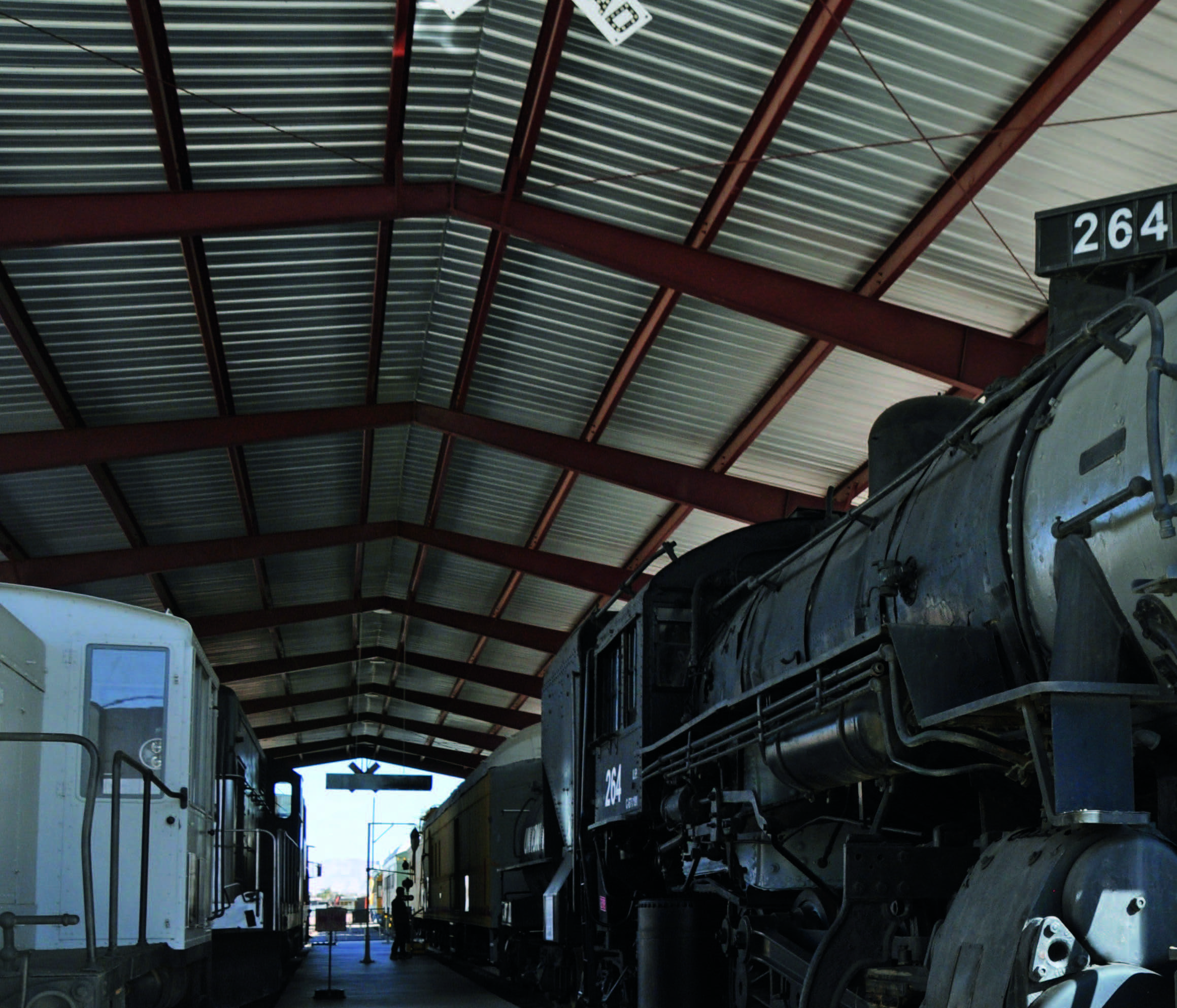
Locomotion Commotion
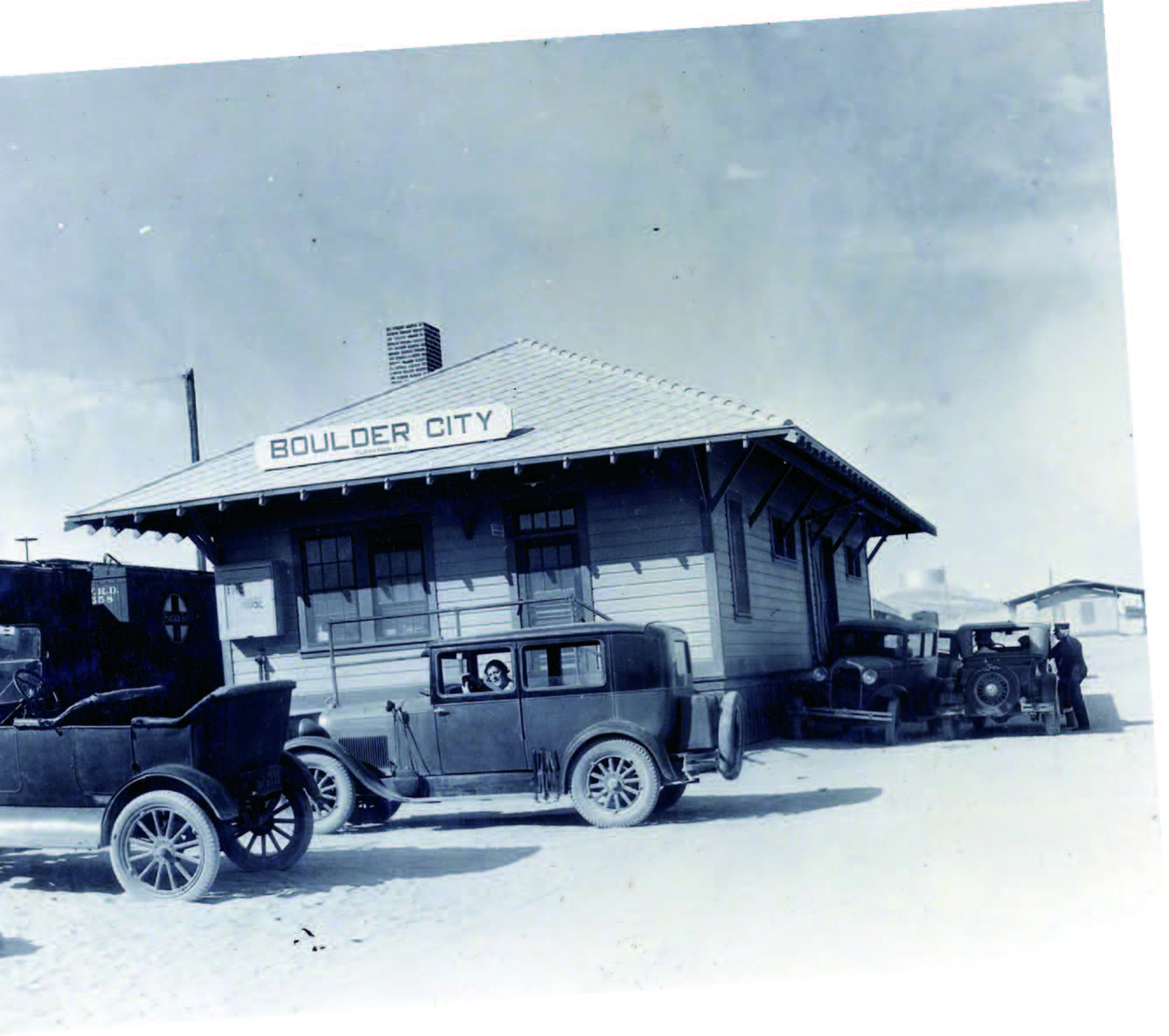 History is on track with growth at Boulder City’s Nevada State Railroad Museum.
History is on track with growth at Boulder City’s Nevada State Railroad Museum.
BY CAROLINE HORWITZ
“There’s a romance to trains, a kind of magic,” says Peter Barton, administrator for the Nevada Division of Museums and History. “Riding one never seems to lose its charm.”
Indeed, this charm is felt by all the guests at the Nevada State Railroad Museum in Boulder City as they ride inside a 100-year-old train car (with the modern bonus of air conditioning), speak with the friendly attendants in traditional railroad uniforms, wave from the window to cyclists on the nearby bike path, and hear the quintessential train whistle that draws gasps and emblazoned smiles from toddlers to retirees.
The museum offers train rides every Saturday and Sunday, plus access to a model railroad and several historical trains, including an old post office car. It relies almost entirely on a crew of more than 80 volunteers, all of whom have earned their Federal Railroad Administration licenses.
MAINLINE TO HISTORY
The railroad was acquired by the State of Nevada in 1986 and opened as a museum in 2001, but possesses a much deeper history. The U.S. government originally built a 20-mile line in the 1930s to support the building of the Hoover Dam, then called the Boulder Canyon Project. It took three different railroads to transport the heavy materials necessary for construction, including the vast amounts of cement. Later, in 1961, the line carried a giant generator down to the dam, after which the section to the dam was abandoned and torn up.
Union Pacific discontinued its train service between Henderson and Boulder City in 1985 and offered the line to the state. Eager to acquire a piece of such significant history, the state spent several years building the facilities necessary for a museum, then began its search for a collection. The equipment includes two engines that were used to carry rockets at the Nevada Test Site: a 1939 diesel locomotive (the first of its kind on the Union Pacific Railroad); a 100-year-old caboose; and even a small, 7.5-inch gauge train that passengers sit atop to ride.
EVENTS FOR EVERYONE
In addition to the museum’s collection, it also hosts numerous special events. Each year, visitors can choose from storytime on the train, Western-themed rides, Easter and Halloween rides, and the ever-popular Santa train at Christmas time—children visit with Santa and Mrs. Claus on a decorated train and even wear pajamas during the evening rides for a magical holiday experience.
Schools may also arrange field trips and group rides for students, and adults may pay to be “engineer for an hour,” during which the crew will instruct and allow them to operate the train.
Perhaps one of the most meaningful special events held, Peter says, was when the museum hosted five surviving sailors who were stationed on the USS Nevada in World War II. The veterans were treated to an old-fashioned train ride complete with a reenactment group and ’40s-era singers.
“All five men rode trains to get almost everywhere throughout their time in the war,” Peter says. “We were happy to stir some of their memories from that time and give them some new ones.”
FULL STEAM AHEAD
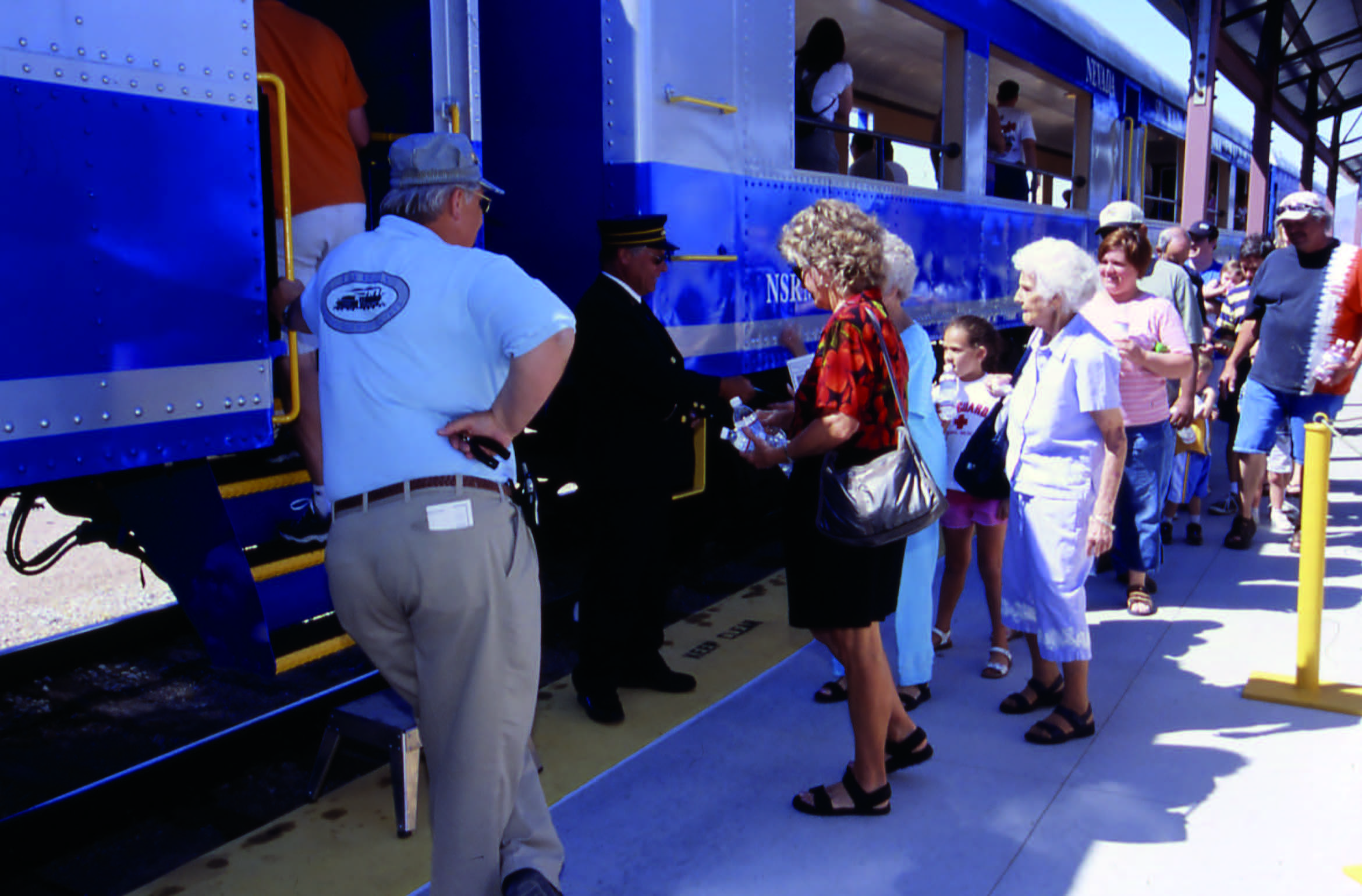 In addition to such rich history, the museum possesses some ambitious plans for the future. These include a bigger retail store and interpretive exhibits highlighting the importance of the railway’s role in supporting Hoover Dam—one of the largest public works projects in the country’s history. A larger ticket depot where visitors can purchase their train tickets inside (out of the often sweltering weather) is also in the works so people will be able to enjoy more of the ambiance of what a depot used to look like.
In addition to such rich history, the museum possesses some ambitious plans for the future. These include a bigger retail store and interpretive exhibits highlighting the importance of the railway’s role in supporting Hoover Dam—one of the largest public works projects in the country’s history. A larger ticket depot where visitors can purchase their train tickets inside (out of the often sweltering weather) is also in the works so people will be able to enjoy more of the ambiance of what a depot used to look like.
The museum is also focused on expansion plans that coincide with the completion of Interstate 11—a proposed interstate highway through Nevada and Arizona. Once it’s finished, they can reconnect the railroad line at Railroad Pass, with a bridge over the highway to carry the track. More types of train rides and varied experiences will then be offered, such as longer rides into Henderson and dinner trains. Plans to roll out a new website are in the works as well, which will allow customers more online ticketing options and news on future opportunities.
The museum’s continually growing success is largely responsible for the expansion possibilities.
“It’s just amazing,” Peter says. “Of all seven state museums, this one has the most consistent growth.”
Randy Hees, director of the museum, agrees. “We’re seeing about a 5 percent growth in visitors per year, and the museum is earning just over half of the cost of operations,” he says. “It’s able to, little by little, reduce its dependence on the state.”
The romance of this upwardly mobile Boulder City gem, it seems, will continue to grow along with the rest of it.

